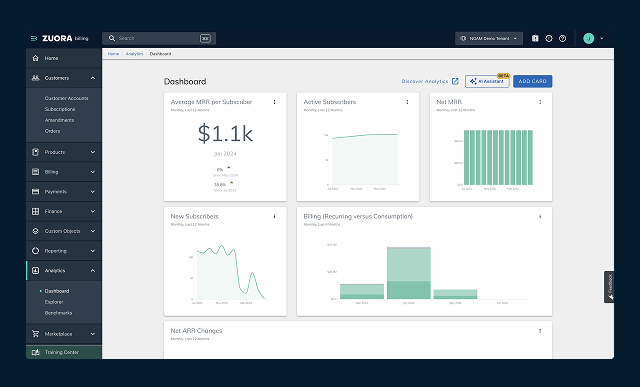How deeper insights can help local government amid Britain’s austerity measures
Local government bureaus are under increasing pressure to deliver much needed regional support systems in an efficient and cost-effective manner. The fulfilment challenge is for public sector managers to determine and balance priorities amid ever changing financial, legislative and political influences.
The use of business intelligence (BI) and analytics helps to extract data from enterprise resource planning (ERP) and line of business systems (LOB). LOB systems characterise local government and encompass services such as: social care, highways, education and learning, revenue, benefits, and housing. Locked inside these systems is key data that directorates and pubic sector managers need in order to make more informed decisions relating to the financial and people aspects of their ERP.
Although the operating environment in local government may vary from private sector industries, leaders and managers in both of these kinds of organisations need access to quality business information to drive effective delivery of services. Interestingly, public sector success rates for BI implementations can be higher than equivalent endeavours in the private sector. This may be due to the ingrained public sector practices of strongly controlled annual budgeting and planning, and a culture of effective scheduling of project timelines and resources.
Historically, public sector organisations often looked to third-party reporting tools to extract data from their multi-systems or to build complex data warehouses to combine data from these many LOB sources. The development of more sophisticated BI analytical products – that now come with the latest ERP offerings – are starting to provide a sensible alternative to these approaches, reducing the need for separate solutions or the substantial maintenance often required for data warehouses.
This can be difficult in a local government environment where a wide range of very different business activities co-exist
Running local government on business intelligence
With big data, AI and IoT trending it is more important, now than ever before, that a single version of the truth feeds integrated public sector systems with the right information to produce appropriate outputs that will inform and drive core business decisions. Thankfully, BI applications are getting easier to navigate. However, the design and data structures that sit behind a user-interface determine the user experience, precision, quality and reliability of the data itself. End-user self-service, customisable dashboards and reporting integration are key for translating raw data into meaningful business intelligence, insights and trend analysis.
New-generation ERP systems with embedded BI are making operational reporting simpler, presenting users with the tools and capabilities to create their own analysis directly from the transactional system in real-time, thereby removing some of the reliance upon IT professionals. Giving users access to the live transactional data, that doesn’t require a data warehouse or an ETL (extract, transform, load) routine enables a much more efficient and reliable reporting process. It is also important to understand that increased ease of reporting does not mean that governance and control is no longer necessary. Some of this control can be provided by the ERP environment in terms of data security and user access which flow from the corresponding controls around transactional activity.
In-application dashboards are being increasingly used to ‘push’ real-time information to system users, reducing the burden on dedicated distribution activities for operational information. The analysis and reports being produced in-application also means that any resulting actions can be accessed immediately and with context-driven precision. Further, higher volumes of data, as well as differently structured or unstructured data, increase the need for sensible analysis and this is where robotic process automation (RPA) and artificial intelligence (AI) are set to become more important in strategic BI activities. These technologies can be used to automate repetitive data preparation tasks, and algorithm-based machine learning capabilities can find the best analysis of the newly prepared data – identifying the less obvious trends, removing outliers, and minimising errors.
Public sector organisations often looked to third-party reporting tools to extract data from their multi-systems
Implementing change at a local level
The level of business engagement and stakeholder management needed to implement a cross-functional reporting capability is not to be underestimated and this can be a project within itself. A prevailing factor for any implementation of a new system is user adoption and the behavioural changes required to elicit new ways of working. A successful implementation, with best user adoption, will depend on a good understanding and effective prioritisation of critical business needs. This can be difficult in a local government environment where a wide range of very different business activities co-exist; it is not always possible to compare priorities between one directorate and the next. However, if management can identify the key drivers and outcomes for the BI system this can help to steer success factors towards areas that will achieve the greatest impact. Starting with areas of the organisation that will benefit the most will encourage take-up, tell a good story, and lay the foundations for future phases of roll-out.
Today’s sophisticated BI systems are often ‘functionally-rich’ with the power to absorb, analyse and visualise data. However, if people cannot get to grips with the navigation, features, look and feel of a new BI system within a relatively short time there is a risk that they will revert back to familiar methods (such as spreadsheets) that come with the possible, but untrue, perception that lesser rigour, governance and control is entailed.
In an austere environment of financial pressures and continued public scrutiny, the cost for any new IT method or system needs to be justified. The councils looking to inspire confidence, and can demonstrate the promise of more efficient results from streamlined data for better decision making, will do themselves a great favour when it comes to asking for a budget to implement BI and analytics.





